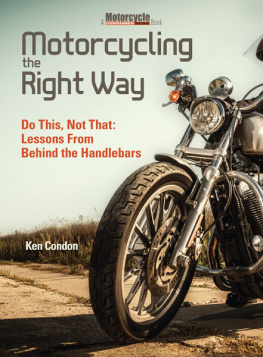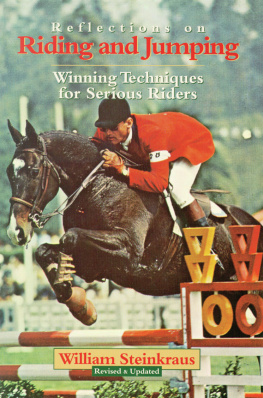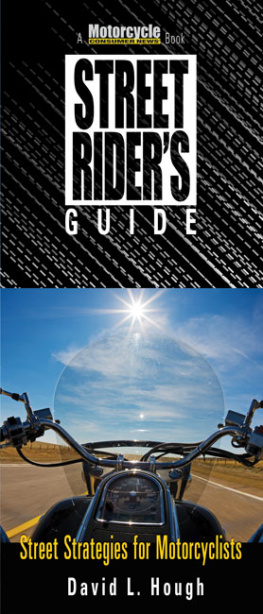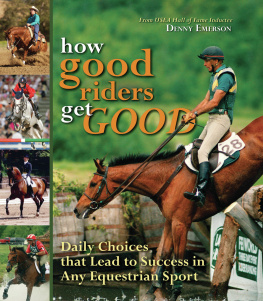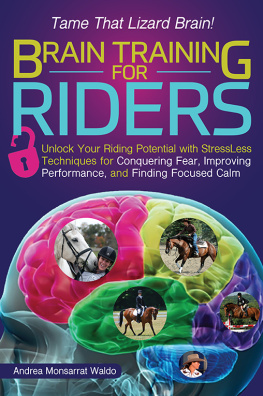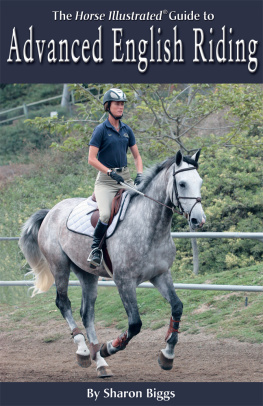Mastering Essential Skills

There are certain skills that are necessary if you are to ride a motorcycle well. They may seem simple at first, but you just may find yourself on your side or in an ambulance if you arent prepared.
Slow-Speed Riding
Slow-speed maneuvers can stir fear into the hearts of even the best riders. Its understandable because motorcycles are unstable at slow speeds. The solution many riders employ is to drag their feet or paddle-walk, but there is a better way. The reason parking lot speeds are so intimidating is because of the instability inherent with a slow-moving motorcycle. Its worth learning to handle slow-speed maneuvers not only to minimize the risk of broken turn signals and bruised egos, but also to increase overall confidence.
Slow-speed maneuvers, such as negotiating stop-and-go traffic, maneuvering into a tight parking space, or making tight U-turns require specific slow-speed control skills. The right way to think about slow-speed maneuvers is to accept them as part of riding a motorcycle and then learn and practice these skills. Lets distill the key points of successfully executing slow-speed maneuvers.
Why Slow Is Difficult
Its easy to keep a motorcycle balanced at highway speeds because inertia from the bike/rider mass and gyroscopic force generated by the fast spinning wheels, as well as the righting effect of front-end geometry all combine to generate stability. Inertia describes the tendency for objects to stay at rest or in motion. A motorcycle rolling down the highway at 60 mph (96 kph) continues at 60 mph (kph) unless forces intervene. Inertia also contributes to stability by resisting changes in direction by pulling the motorcycles mass straight ahead. The effect of this force diminishes with a decrease in speed.
Gyroscopic forces from the spinning wheels also contribute to keeping the bike upright and moving straight aheadthe faster the wheels spin, the more stabilizing effect they provide, which is why its easy to fall over at slow speeds. If you were to hold a spinning wheel by its axle and try to turn it left or right, youd feel gyroscopic resistance as the wheel tries to remain spinning on its current plane. Try turning the spinning wheel to the right and the wheel will react by leaning to the left. This reaction has a role in leaning a motorcycle into a turn. But, gyroscopic precession has almost no effect when the wheels are turning at slow speeds.

FIGURE 9.1
Figure 9.1 illustrates the effect of force on diminishing speed.
Slow-Speed Balance
To keep the bike on two wheels without the benefit of inertia and gyroscopic forces, you need to balance the center of gravity (CG) directly above the tire contact patches so gravity doesnt get an overwhelming hold on one side of the motorcycle. Imagine trying to balance a broomstick on your palm. It takes continual adjustment to keep the brooms contact point vertically below the CG so the broomstick remains uprightreact too slowly, and the broomstick falls to the floor.
You need to do the same thing when trying to stay upright on a slow-moving motorcycle. The difference is that the motorcycle is the broomstick, and you must move the tires contact patch to keep in balance by turning the handlebars left and right, which causes the steering headand the motorcycles CGto from shift side-to-side. Shifting your body weight left or right is another way to move the combined CG to help keep the bike upright.
Feet Up
When riding slowly, many riders drag their feet for fear of falling over. However, to maintain stability and balance, youre better off keeping your feet on the pegs and your knees against the tank. This posture helps stabilize the combined motorcycle/rider mass.
We mentioned earlier how you can use body positioning to help keep the CG over the contact patches (remember, you are part of the CG when mounted on the bike). By keeping the feet on the footpegs, you can lean the bike more-or-less independently of your body for rapid adjustments. One way to help the bike respond quickly is to support more weight on the footpegs and to relax your upper body. This allows you to quickly shift body weight, turn the handlebars, or lean the bike to regain balance.
When making tight turns, position your weight on the outside footpeg (the right peg for left turns) to let the motorcycle lean. For the tightest turns, shift your butt off the outside portion of the seat and lean the bike beneath you.

When riding slowly, many riders drag their feet for fear of falling over, but to maintain stability and balance, youre better off keeping your feet on the pegs and your knees against the tank.
Rear Brake Control
One other reason for keeping your feet on the footpegs is so your right foot can apply rear brake pressure to control speed (without chopping the throttle off). Dragging the rear brake also gives the drivetrain a tension force to pull against, which stabilizes the chassis and helps pivot the bike around when making tight U-turns.
If you feel the need to slow down, apply rear brake pressure while avoiding the front brake. Most motorcycle front brakes are rather touchy when riding at a snails pace and can easily cause a slow-moving motorcycle to lurch to an abrupt stop. And if the bike is leaning even slightly, it will likely drop faster than you can react. The solution is to avoid front brake use and use the rear brake only.
Be aware that some motorcycles have integrated brake systems that dont allow rear-brake-only application and some have power-assisted brakes that make slow-speed braking a particularly touchy affair.
Eyes Up
We learned earlier about how visual direction control can help direct your motorcycle where you want it to go. Under nonthreatening conditions, your eyes naturally scan ahead. But when anxiety takes hold, most people narrow their vision and focus on the near distance directly in front of them.
Get up out of your chair and walk around your house, maneuvering around furniture and through doorways. Now, walk the same route, but this time look down at the floor directly in front of you as you walk. Looking down will likely make you anxious about crashing into a piece of furniture or a wall and will cause disorientation. Now, picture yourself doing this exercise in a house youve never been in before, and you can see the importance of good visual habits. The same anxiety applies if your eyes were glued to the ground in front of your front wheel while attempting a tight U-turn on your motorcycle. If you cringe at the thought, youre not alone.
Not only do your eyes direct you through turns, they also gather information about where youll be in the next few seconds. This is critical for planning exactly where you want your bike to go to avoid a patch of sand or a vehicle intent on occupying the parking spot you were about to claim. Without looking ahead, you can easily be taken by surprise by unseen hazards, which can lead to abrupt use of the brakes and a sudden loss of forward momentum and balance.
Target fixation is a big problem when trying to perform a tight U-turn. A common scenario is when a rider attempts a slow-speed U-turn across the width of a road. As the rider gets close to the opposite edge of the pavement, he panics and instinctively looks down at what he so desperately wants to avoidthe edge of the road. Consciously tell yourself to look at your desired path, not at the edge of the pavement.
Next page
